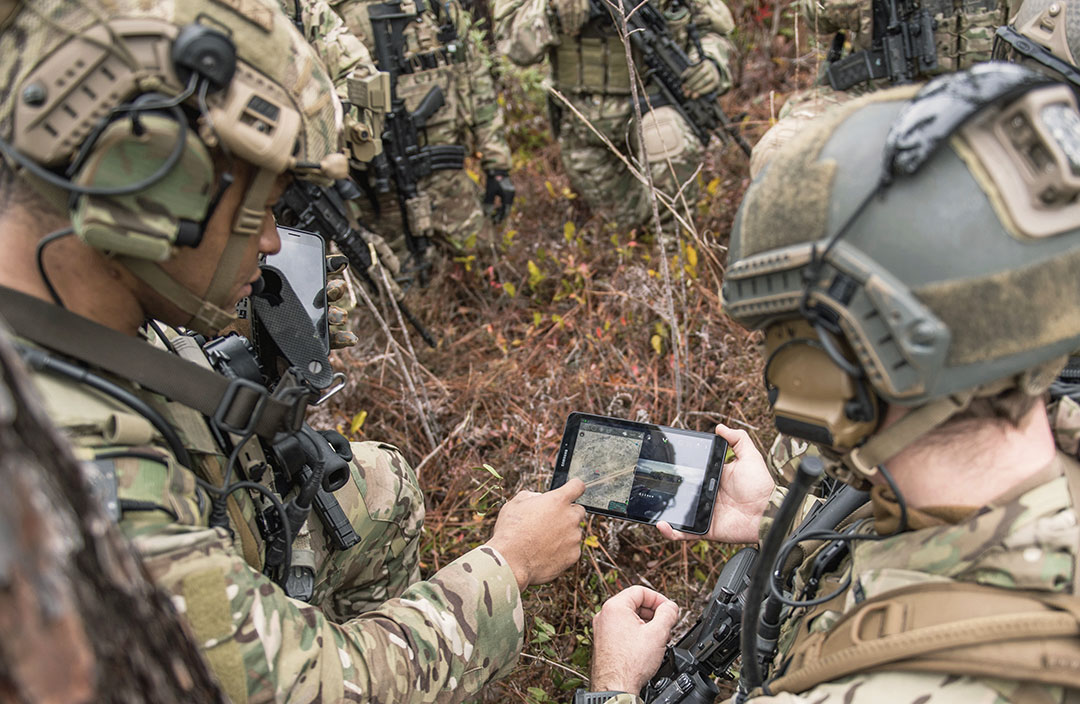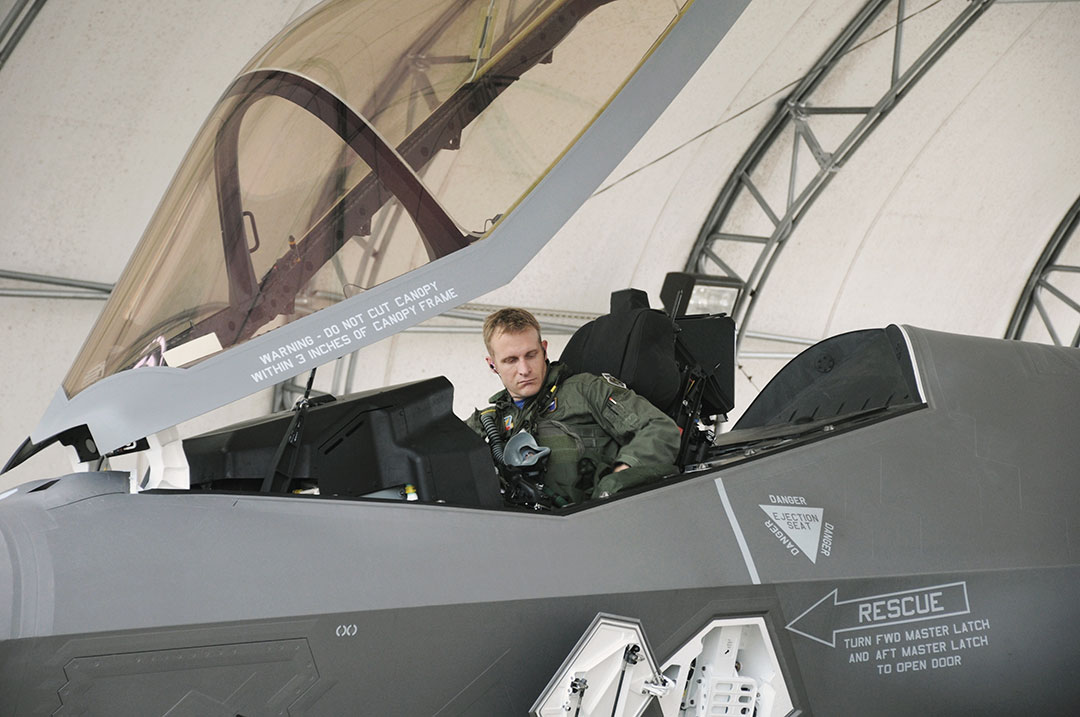New technology links sensors, shooters to speed military response
THE WATCH Staff
The U.S. military is field testing a new approach to warfighting that breaks down technological and communications barriers to speed up responses to missile attacks. A three-day exercise that demonstrated the Advanced Battle Management System (ABMS) in December 2019 gave military leaders a look at how advanced technology that uses artificial intelligence and machine learning can more seamlessly produce a coordinated response to the cruise missile threat.
“We’re trying to make a system of systems that connects sensors, shooters and C2 nodes with the latest technology, to optimize homeland defense for peer-level conflict,” U.S. Army Maj. Sam Rosenberg, a lead planner on the ABMS team at U.S. Northern Command (USNORTHCOM) and the North American Aerospace Defense Command (NORAD), told The Watch.
The ABMS allows warfighters to analyze and share information in real time and orchestrate military operations across all domains — air, land, sea, space and cyberspace. The exercise at Eglin Air Force Base in Florida tested the technology being used to institute the military’s developing concept called Joint All-Domain Command and Control, or JADC2.
Technology developed by the ABMS team and its industry partners simultaneously receives, fuses, and acts upon an array of data from all domains in an instant. The initial exercise focused on defending the homeland from a simulated cruise missile attack. “Peer competitors are rapidly advancing their capabilities, seeking to hold our homeland at risk,” said U.S. Air Force Gen. Terrence J. O’Shaughnessy, commander of USNORTHCOM and NORAD, according to a report by the secretary of the U.S. Air Force Public Affairs. “Working across all of the services and with industry toward solutions to complex problems ensures we meet defense challenges as well as maintain our strategic advantage in an increasingly competitive global environment.”

The ABMS team plans to meet with commanders of geographic combatant commands every four months to address challenges across the globe identified in the National Defense Strategy. The JADC2 concept has been promoted by senior military leaders for three years as a critical warfighting tool, but until recently the idea was confined largely to discussion groups and animated demonstrations, according to the Air Force report. That changed in December 2019 when aircraft from the U.S. Air Force and Navy, a U.S. Army air defense sensor and firing unit, a special operations unit and a Navy destroyer came together to confront and defeat the simulated threat to the homeland.
When the missile threat was detected, new software, communications equipment and a mesh network — networks in which nodes connect dynamically and directly to other nodes — relayed the data to the USS Thomas Hudner, a destroyer deployed in the Gulf of Mexico. The same information was transmitted to a pair of Air Force F-35s and a pair of F-22s. Commanders at Eglin Air Force Base, two Navy F-35s, an Army unit equipped with a mobile missile launcher and special forces on the ground also received the data.
Events culminated on December 18, 2019, when senior leaders from across the Department of Defense (DOD) arrived at the test’s command-and-control hub for an ABMS overview and abbreviated exercise. They watched real-time data pour in and out of the command cell. Information flowed instantly and simultaneously across air, land, sea, space and cyberspace. Information came from fighter jets, passing satellites and from sea, and ground forces on the move.
Technological silos of information in which one service’s battle systems can’t talk to the other has been a key challenge in multidomain operations. The project to develop the ABMS is breaking down those barriers through partnerships with defense industry contractors. In addition to including all military services, the ABMS team is working with 120 agencies and industry partners, Rosenberg said. Private sector partners range from industry giants — Boeing Co. — to tech firms with applicable specialties, such as Immersive Wisdom Inc., a Florida-based company that provides virtual, mixed and augmented reality software, and Anduril Industries Inc., a California-based firm that has assembled a team of experts in artificial intelligence, computer vision, sensor fusion, optics and data analysis.

Air Force acquisitions lead Dr. Will Roper spoke of the critical need to leverage the expertise of the private sector. “Our four-month ‘connect-a-thon’ cycle unlocks industry’s ability to iterate with testers, acquirers and warfighters,” he said, according to the Air Force report. “For example, the insights from connecting the F-22 and F-35 for the first time will help our industry partners take the next leap.”
Acquisition processes have been greatly expedited for the ABMS project, said U.S. Army Lt. Col. Ian Vargas, a logistics planner. The critical need to share data across platforms and military services “brings the commercial side of the house to the DOD side of the house,” Vargas said, resulting in acquisitions that take weeks or months rather than years.
Military leaders say they want to demonstrate to the troops and the public what the JADC2 concept means for future warfighting. The concept relies on the ABMS team to develop software and algorithms so that artificial intelligence and machine learning can connect vast amounts of data from sensors and other sources at a speed and accuracy far beyond what is currently attainable.
The ABMS also includes hardware updates for radios and antennas and more robust networks that enable unimpeded data flow to operators. JADC2 also demands a cultural change among service members that responds to multifaceted battlespaces driven by information shared by the joint force.
Achieving this will remove barriers that can keep information from personnel and units. For example, once in place, the new command-and-control ability will allow F-16 and F-35 pilots to see the same information at the same time in the same way a submarine commander sees it. The same information could be viewed simultaneously by a space officer controlling satellites or an Army Special Forces unit on the ground.
“If we get the data piece right, everything will move forward,” U.S. Air Force Gen. John Hyten, vice chairman of the Joint Chiefs of Staff, told audience members at an Air Force Association breakfast in January 2020. “This will be the most important thing we do in the joint force: to figure out how to do that.”
He said the military’s Joint Requirements Oversight Council will move expeditiously to make the JADC2 concept a reality. “I don’t know how that process is going to end up, but I can tell you one thing: It’s not going to be a list of performance criteria that you have to do 10 years from now,” Hyten said, according to a report by the Breaking Defense website. “It’s going to be different. It’s going to focus on how we do things. It’s going to focus on innovation in the services, innovation in industry.”
The process will require the DOD, he said, to allow for flexibility in the development, operation and testing of the new technology — and to allow for failure. “That’s going to be difficult for the department,” he said, “but we’re going to push that, push that really hard.”
This leap forward in kill-chain technology is sure to spark dialogue among military partners throughout the world. What are the engagement criteria? Who gets to shoot? If sensor data is shared across all domains, is there an adequate picture of where friendly forces are deployed to mitigate fratricide? Email your comments to n-nc.peterson.n-ncj3.mbx.the-watch@mail.mil.

